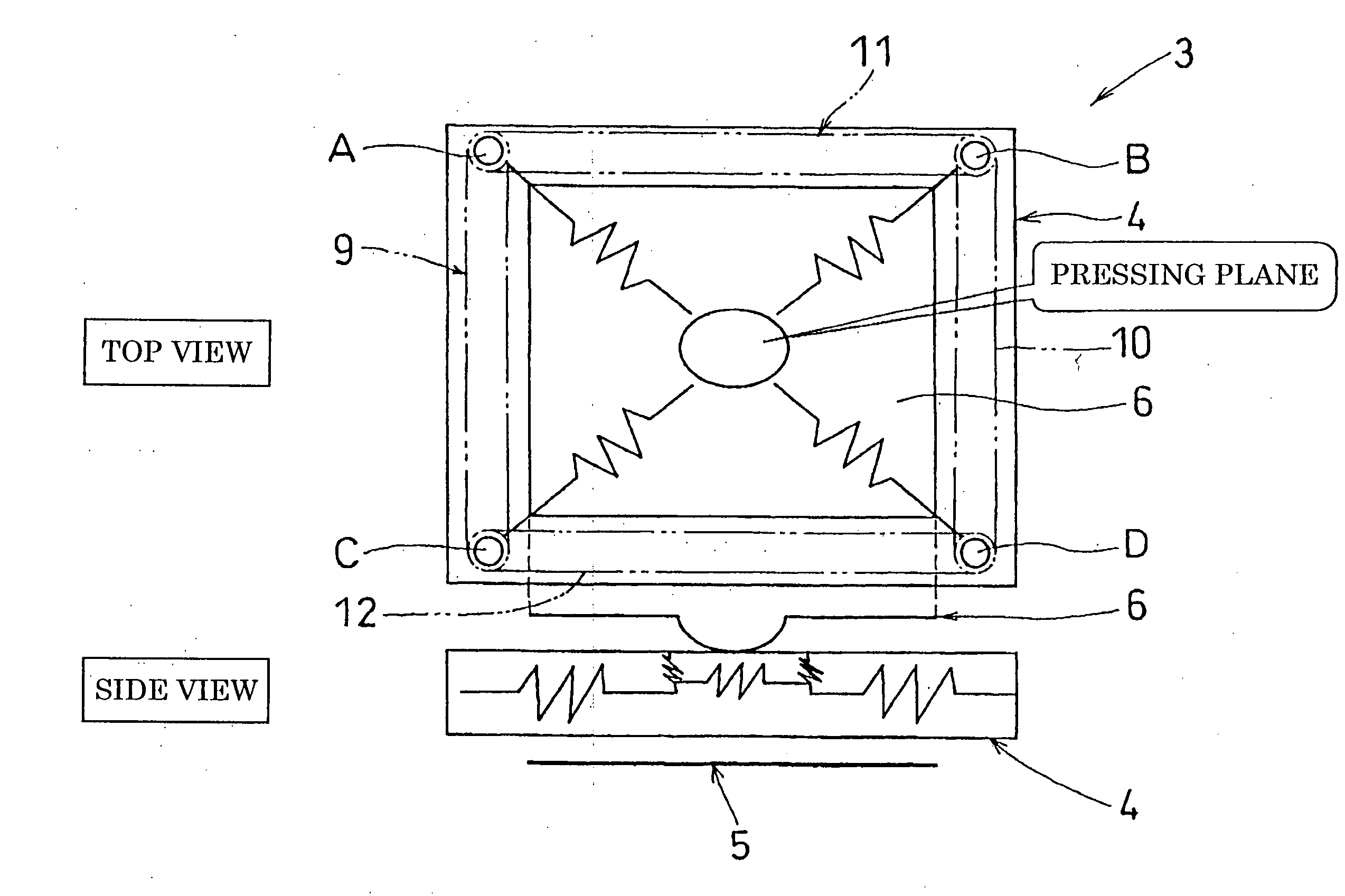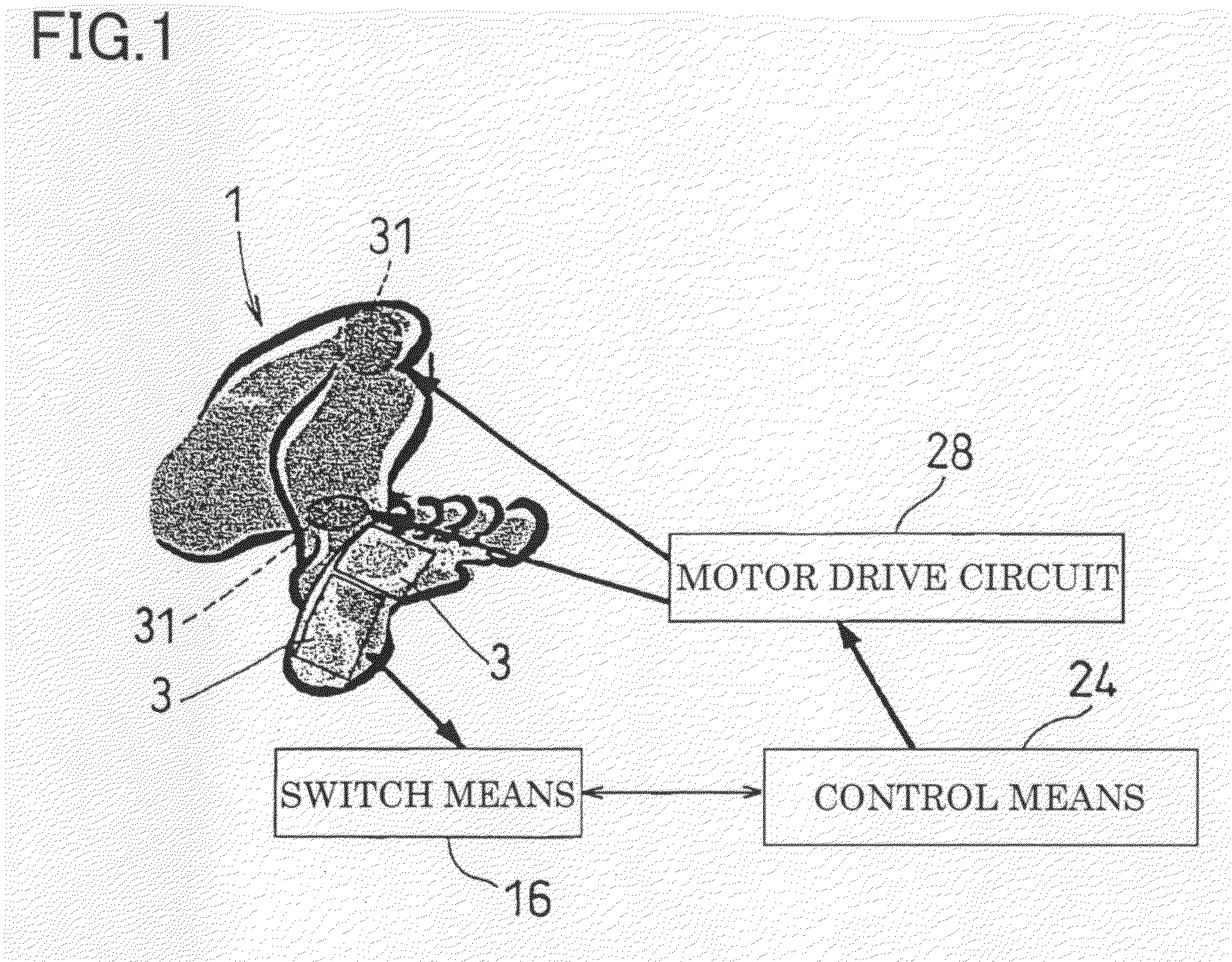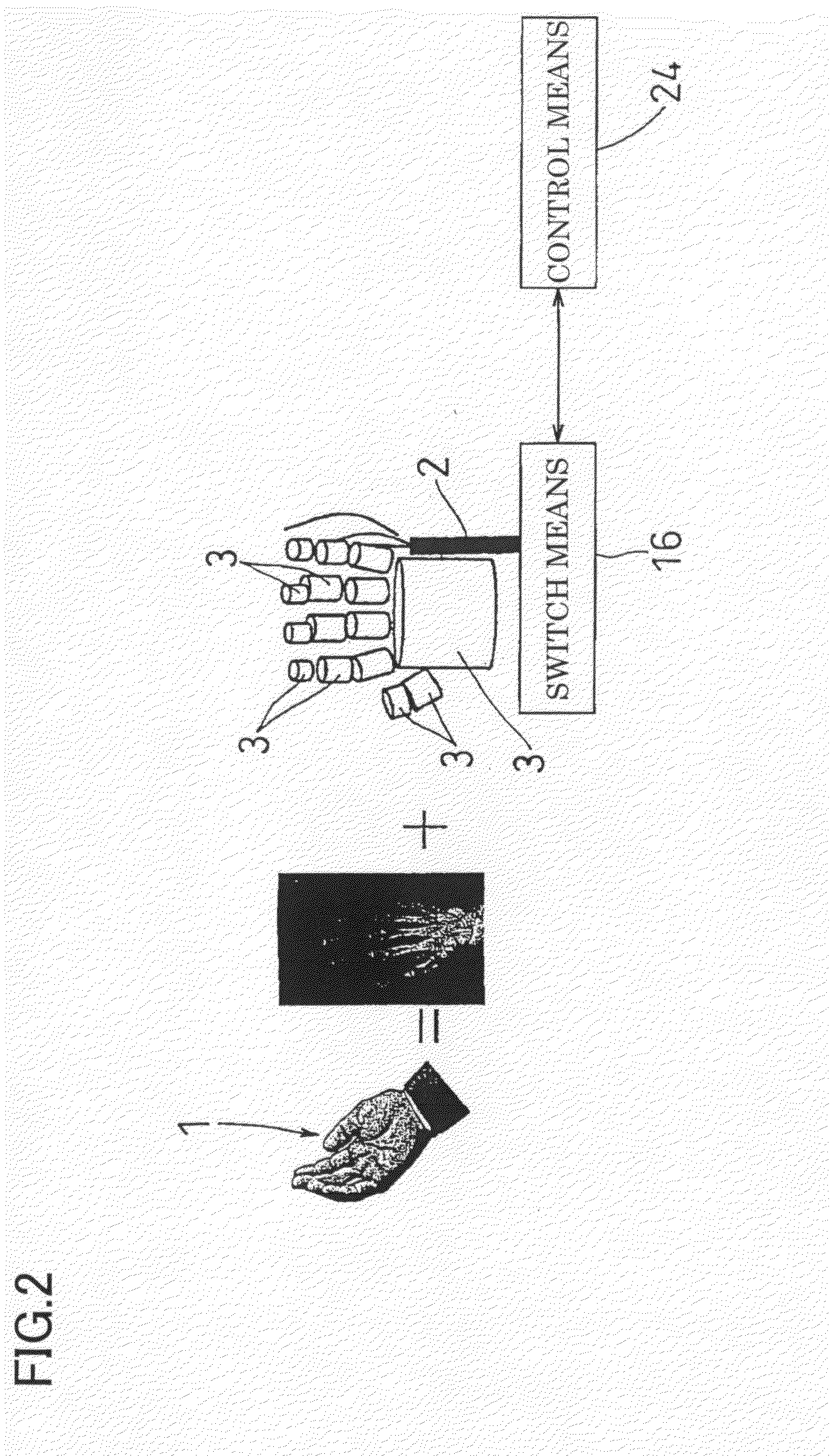Tactile Sensor and Tactile Sensor Application Apparatus
a tactile sensor and sensor technology, applied in the field of tactile sensor and tactile sensor application apparatus, can solve the problems of inaccurate pressure information detection, application hindrances, and inability to detect pressure information at that position, so as to reduce cost, improve reliability, and obtain accurate information
- Summary
- Abstract
- Description
- Claims
- Application Information
AI Technical Summary
Benefits of technology
Problems solved by technology
Method used
Image
Examples
Embodiment Construction
[0053]Hereafter, embodiments of the present invention will be described referring to the drawings. FIGS. 1 and 2 show one embodiment in which the present invention is applied to a palm or a hand of a robot (controlled apparatus) 1. In the embodiment, a tactile sensor 3 that is built in a unit is installed onto joints of a sole, fingers, or a palm that are skeleton of a robot 1, being fitting to these parts. In the present embodiment, as shown in FIG. 1, the two tactile sensors 3 are installed onto the sole of the robot 1, and as shown in FIG. 2, the fourteen tactile sensors 3 are installed onto the fingers of the hand and each one tactile sensor is installed onto the palm of the hand and to the back of the hand, respectively. Since these tactile sensors 3 are arranged being fitted to joints of the hand and the sole of the foot, the joints can be operated freely and magnitudes of pressures thereof and their areas and a center of gravity location of the pressure can be obtained with a...
PUM
 Login to View More
Login to View More Abstract
Description
Claims
Application Information
 Login to View More
Login to View More - R&D
- Intellectual Property
- Life Sciences
- Materials
- Tech Scout
- Unparalleled Data Quality
- Higher Quality Content
- 60% Fewer Hallucinations
Browse by: Latest US Patents, China's latest patents, Technical Efficacy Thesaurus, Application Domain, Technology Topic, Popular Technical Reports.
© 2025 PatSnap. All rights reserved.Legal|Privacy policy|Modern Slavery Act Transparency Statement|Sitemap|About US| Contact US: help@patsnap.com



